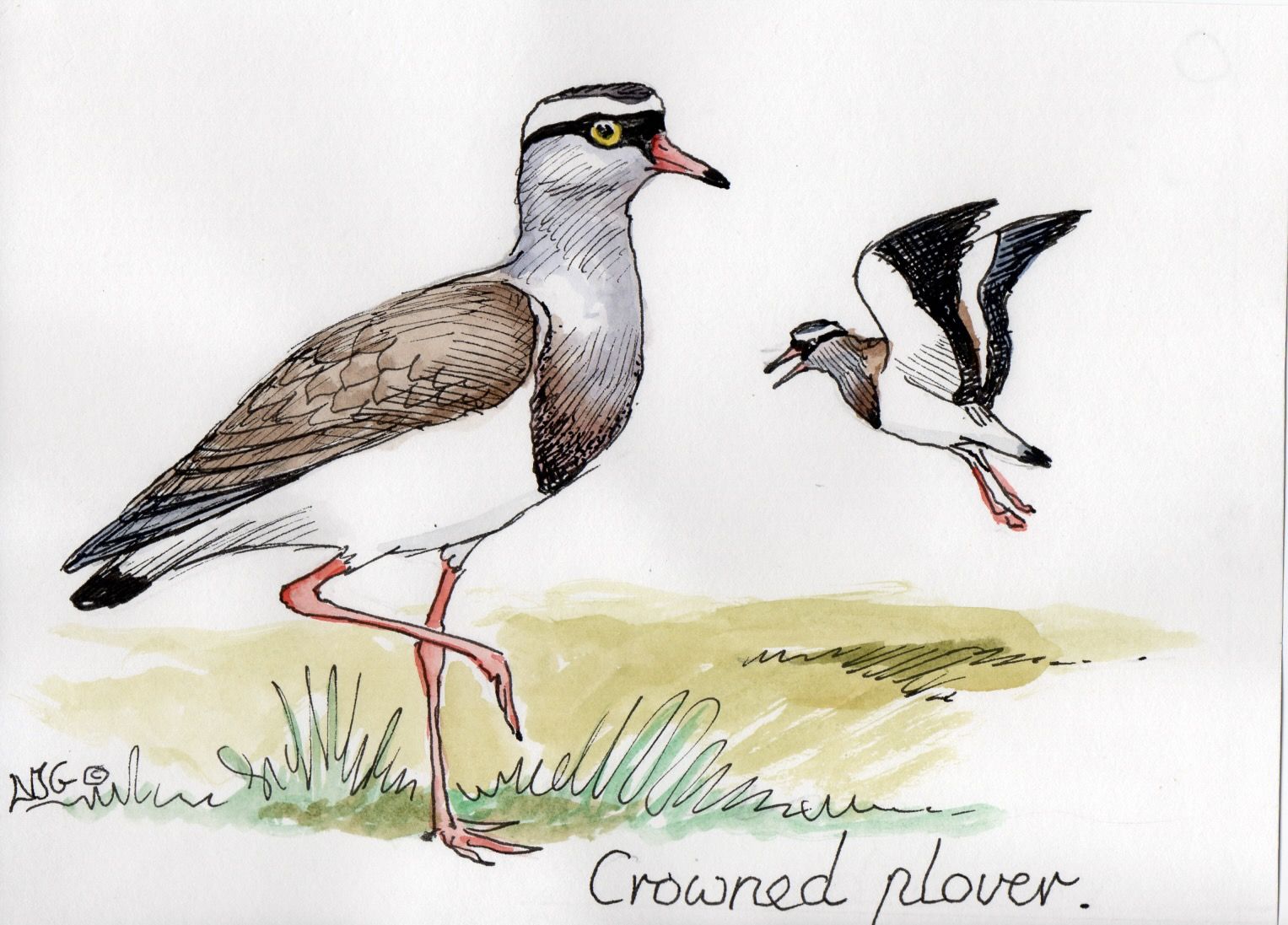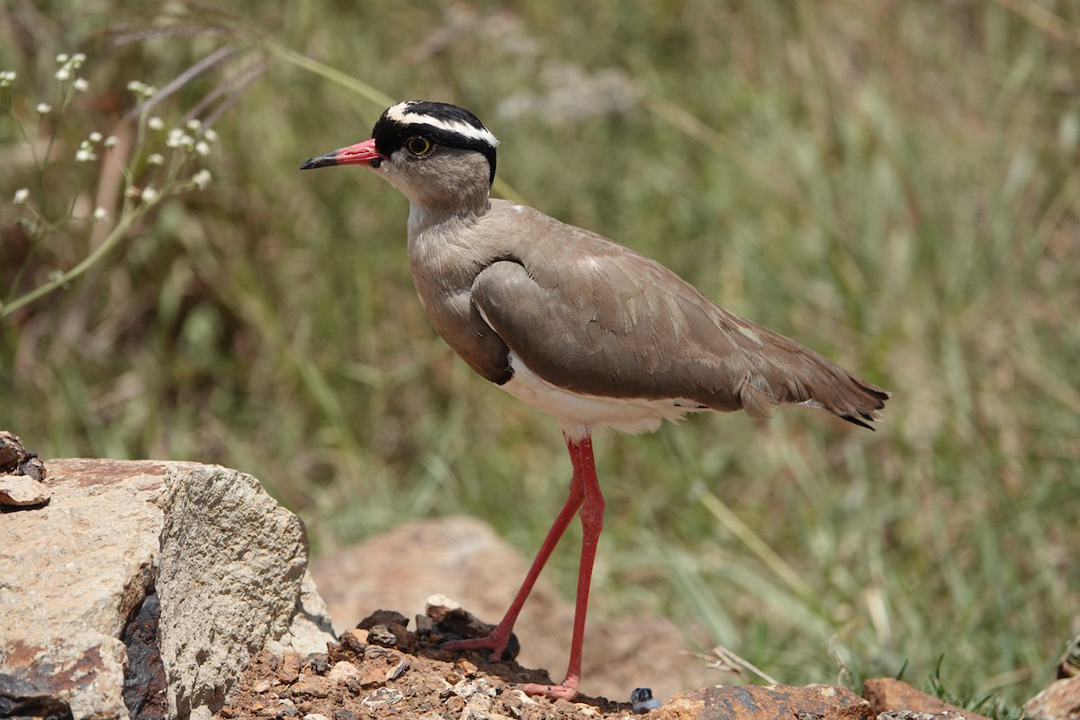Crowned Lapwing (Plover)
-
SCIENTIFIC NAME: Vanellus coronatus
-
SWAHILI NAME: Kiluwitaji
The Afrikaans name for this bird is ‘kiewiet’, because its most common call is a croaky “krueeet.”
The Afrikaans name for this bird is ‘kiewiet’, because its most common call is a croaky “krueeet.”

Bird
Crepuscular
Omnivorous
least concern
126-200 g
20-34 cm

Where do crowned lapwings like to build their nests?
They build nests on the ground, and parents sometimes need to stand over their chicks to shade them from the sun.
When crowned lapwings are not breeding, they are social and form flocks of from ten to forty birds. When nesting, they often maintain a notable distance from other mated pairs.
While they are most vocal during the day, they are often heard at night as well. Their calls vary depending on current activities, breeding, and alarms.
Loud, gregarious, and aggressive, crowned lapwings are most active at dusk and forage in the late afternoon and at night. They don’t like damp habitats and will leave regions during rainy seasons. Sometimes they feed near cattle and in association with insectivorous bat-eared foxes.
Least concern
Crowned lapwings favor a diet of termites and ants. They often hunt for their food as a group that includes black-winged lapwings.
Monogamous crowned lapwings may return to the same nest for several years, which are often constructed near a tree that provides shade for the resting parent (typically the male). Birds breeding in loose groups can sound alerts about predators and mob them together. Chicks leave the nest for the first time several hours after hatching, but adults continue to care for them and defend them from predators.
Chicks and eggs are prey for snakes, raptors, crows, cats, domestic dogs, and mongooses, while adults are prey for eagles, sparrowhawks, falcons, and owls.
Crowned lapwings are common throughout Kenya.
Crowned lapwings can be seen in eastern and southern Africa.
These birds prefer dry and open habitats with few trees, such as savannas, fallow fields, golf courses, farmland, and even deserts. They are particularly drawn to land that has recently been burned or overgrazed.
For their first year, young lapwings stay with their parents and use mobbing and calling to help defend a new brood.
